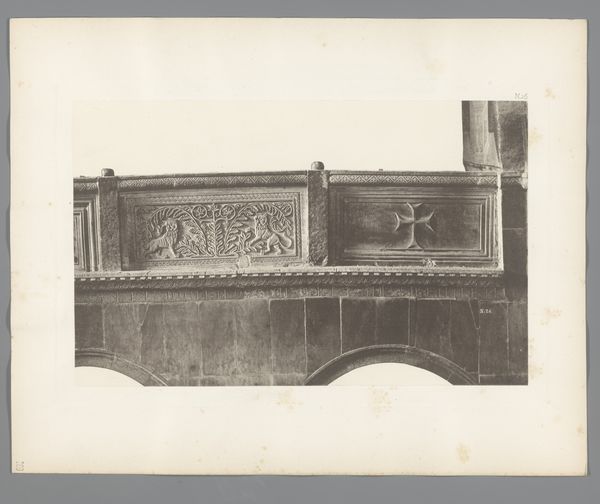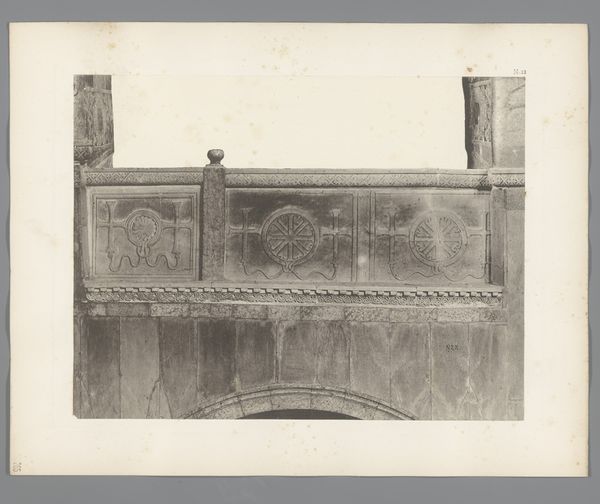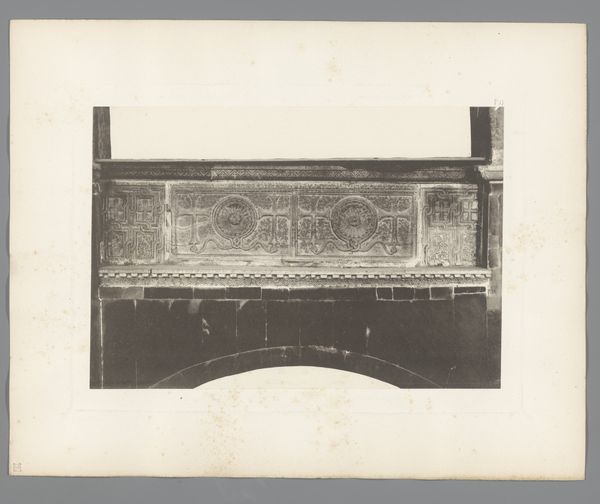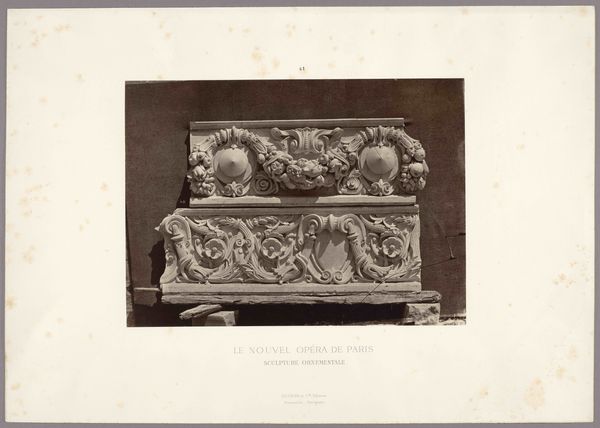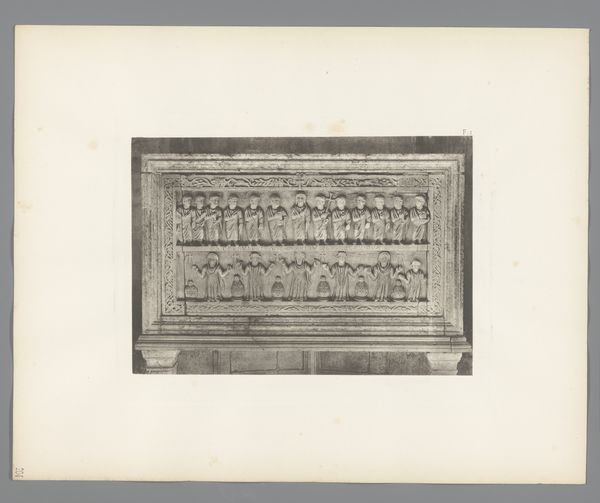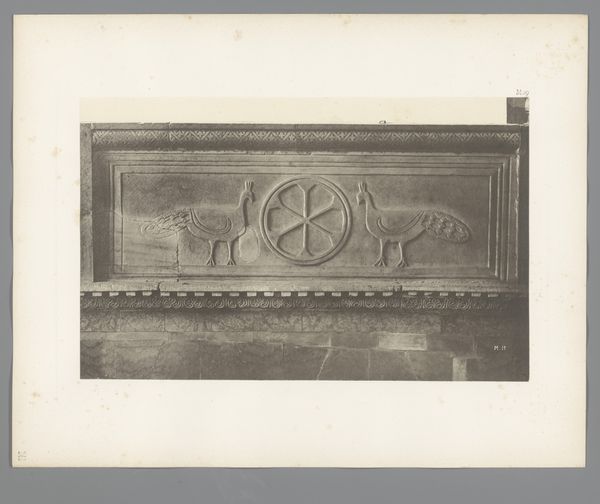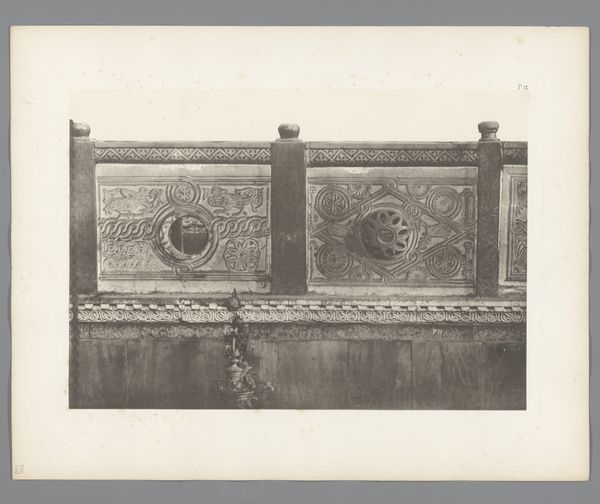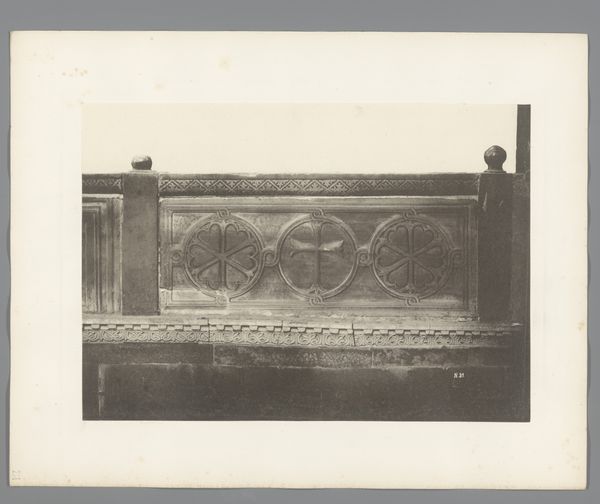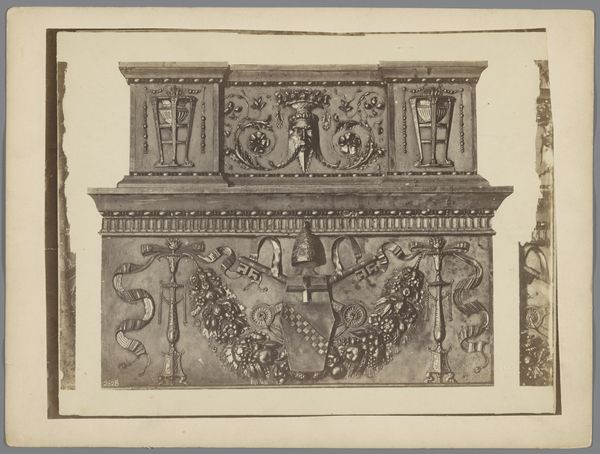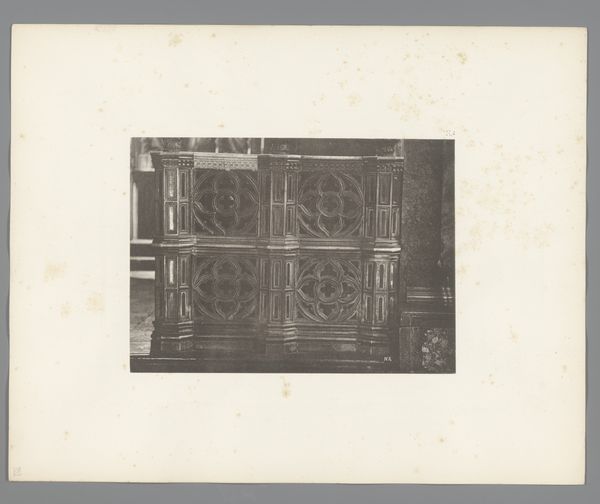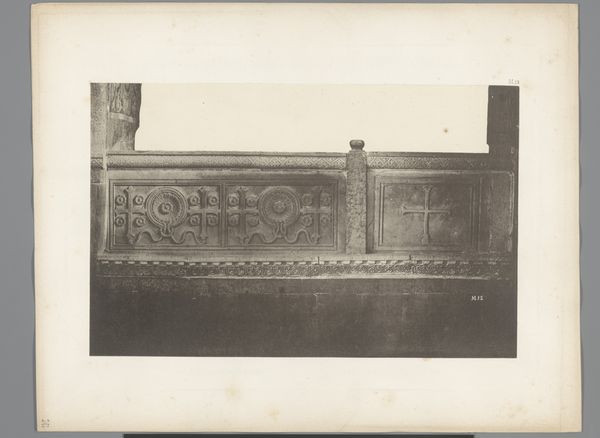
Dimensions: height 311 mm, width 394 mm
Copyright: Rijks Museum: Open Domain
Editor: This gelatin silver print, titled "Balustrade met reliëf van de San Marco in Venetië," was created by Carl Heinrich Jacobi before 1885. I’m immediately drawn to the intricate geometric relief work and how the photograph’s monochromatic palette emphasizes the textures of the stone. What stands out to you when you look at this print? Curator: I observe a meticulous organization of visual components. Consider the stark contrast between the dark, patterned stone base and the crisply defined balustrade. This deliberate separation compels us to analyze the forms independently and then reconcile their relationship within the photographic frame. Notice also the baroque detailing above this separation and ask how the artist brings this forth and still provides us a study in realism. Editor: That’s interesting! The separation does create a sense of visual layering, almost like a collage of textures and forms, but the details and their precise execution ground this within photorealistic captures. What purpose might this architectural division serve, compositionally? Curator: By juxtaposing different visual textures and planar depths, the photographer compels a dialogue. The eye travels, charting not only spatial dimensions but also aesthetic disparities that force comparison. Do the shapes carry the image, or the details that fill those spaces? This image shows Jacobi's understanding of the fundamentals of art in general, beyond photography. Editor: So, it’s not just about documenting architecture, but using photographic techniques to analyze form and texture. I initially saw it as a straightforward depiction, but now I see the strategic interplay of these elements, which complicates its reception. Thank you! Curator: Indeed. By dissecting the visual grammar, we gain insight into how Jacobi manipulates perception and, perhaps, prompts us to reflect on architectural representation itself.
Comments
No comments
Be the first to comment and join the conversation on the ultimate creative platform.
